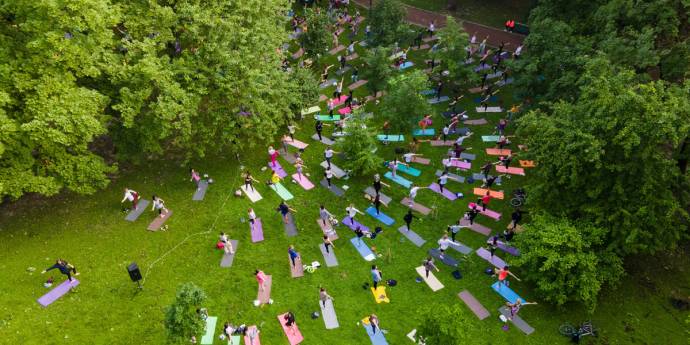Get active for your health (and safety)

Caring more and trying harder is not delivering safer, healthier or more productive businesses, says Francois Barton MInstD, chief executive of the Business Leaders’ Health and Safety Forum.
“Despite a huge increase in health and safety investment by government, sectors and businesses over the past decade, we’re not seeing a sustained reduction of national work-related harm and fatalities,” he says.
The Forum’s latest report, State of a Thriving Nation 2024, says health and safety incidents cost the country $4.9 billion in 2023 (up from $4.4 billion in 2022). It shows nearly half of all New Zealanders have been affected by a workplace incident – to themselves, colleagues, family or friends – and these trends are neither new, nor really improving.

Francois Barton
Barton believes if resourcing was the only ingredient for safer and healthier workplace performance, we would be seeing dramatically better results. “It’s time for us to start learning from those making the gains – here and overseas,” he says.
Against that sobering national backdrop, Barton notes there are significant numbers of businesses that are safer and healthier than they were five years ago.
What these organisations increasingly have in common is good understanding of the critical risks to their people and their essential controls; a sustained curiosity about the real work environment where these essential controls need to work; and a growing acceptance that health, safety and wellbeing, like productivity, are positive outcomes of work going well.
Boards and executive teams with these mindsets drive organisational practices that ensure finite resources and efforts are focused on the things that matter, and not frittered away on well-intentioned but potentially performative activity.
How a board understands and responds to injury data is a great example, Barton says. “The boards and executive teams of leading organisations I talk with all recognise that total recordable injury alone, like good intentions, can pave the way to hell.
“I know of some boards who still exercise a huge amount of energy and angst about lower levels of harm, like a twisted ankle, and by definition, deploy less energy and concern on the systemic and critical risks to people and the business. The sprained ankle and the fall from height each equal ‘one’ in a world of total recordable injury – but the difference in consequences can be literally life-changing.”
“Boards with the right mindsets deploying these practices deliver the best of what effective governance brings to the table – an understanding of context, broader oversight and ensuring efforts and resources are going into the right things.”
Board curiosity about how work is done, and not just imagined, is also critical, for the simple reason that health and safety is an outcome of work.
“I am really encouraged to see a growing appreciation by directors and executives, alike, in understanding the reality of work as done. Knowing the organisation has standard operating procedure for exclusion zones around forklift operations is interesting, but understanding that current warehouse capacity creates congestion that makes the exclusion zone impossible to achieve is invaluable.
“It allows for the right conversations to occur about congestion, rather than the simple temptation to see worker ‘non-compliance’ as the problem.”
Understanding work as done allows effective directors to understand and influence the dynamics and culture of the organisation they govern, including the effectiveness of critical risk controls.
There is no single metric or method for directors gaining these insights – I see directors doing site visits; asking for and discussing proactive learning reviews from successes as well as incidents; undertaking critical risk deep dives with managers and frontline teams in the discussion; engaging with the health and safety committee and supplier groups; and more.”
Healthy, safe and productive work is not solely a technical issue that once fixed, stays fixed. It is complex, dynamic and ever-evolving – and thus demands sustained attention.
“Boards with the right mindsets deploying these practices deliver the best of what effective governance brings to the table – an understanding of context, broader oversight and ensuring efforts and resources are going into the right things.”
Barton puts the challenge simply – it is time we stop fixating on being “statistically safe” believing that keeps us legally safe. Instead, we need to stay critically focused on ensuring we are genuinely managing those things that have got the highest potential for harm. And our ethical and legal obligations to keep working people safe are aligned.
“All of this is why I’m so encouraged by the recently released Health and Safety Governance: A Good Practice Guide by the Institute of Directors and endorsed by WorkSafe NZ,” says Barton.
This new guide provides welcome clarity for New Zealand directors on how to meet their legal and, more importantly, ethical obligations to keeping our people healthy, safe and productive for the business, their families and the country.
“Making these mindset and practice shifts can, and will, deliver the change New Zealand needs. Closing the gap with Australia would deliver $1.4 billion in reduced economic drag every year, and that grows to $4.2 billion if we can catch the UK. We know what works; it’s time to deploy in practice.”